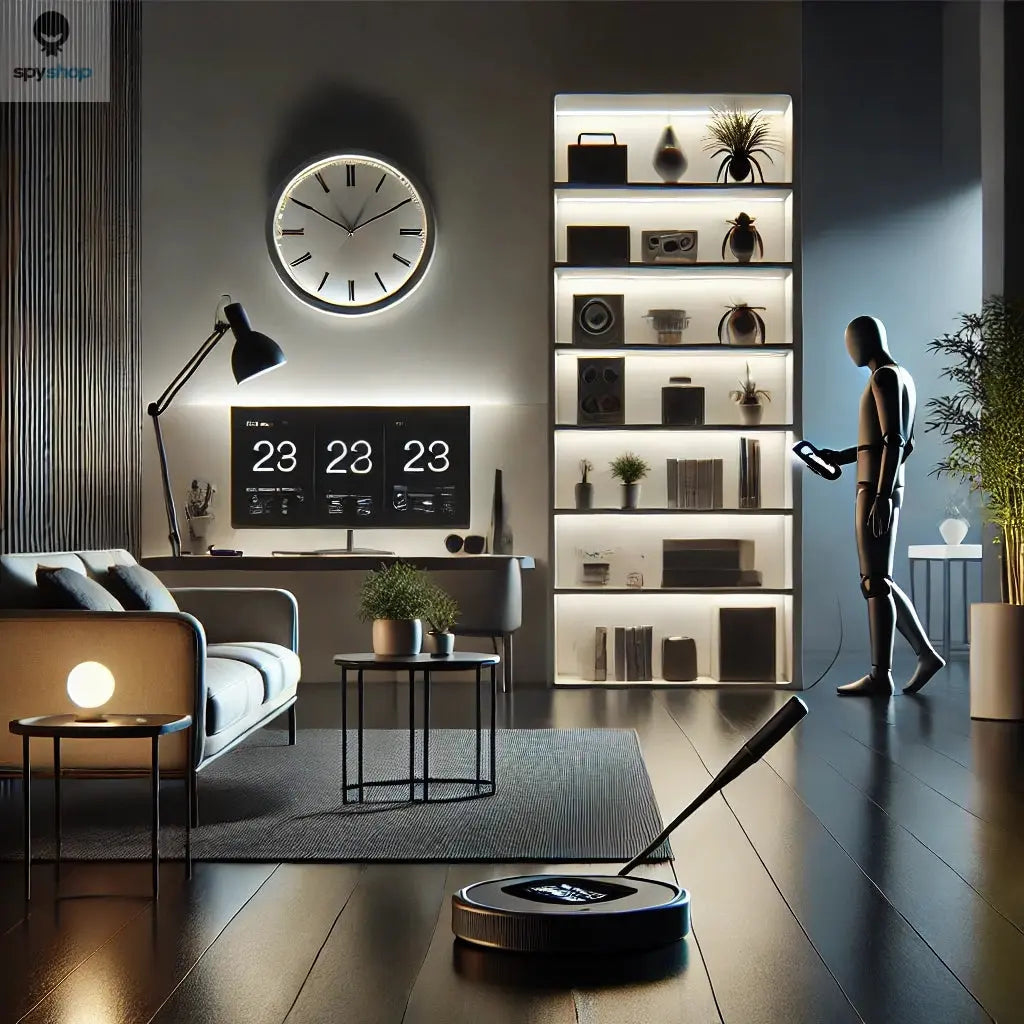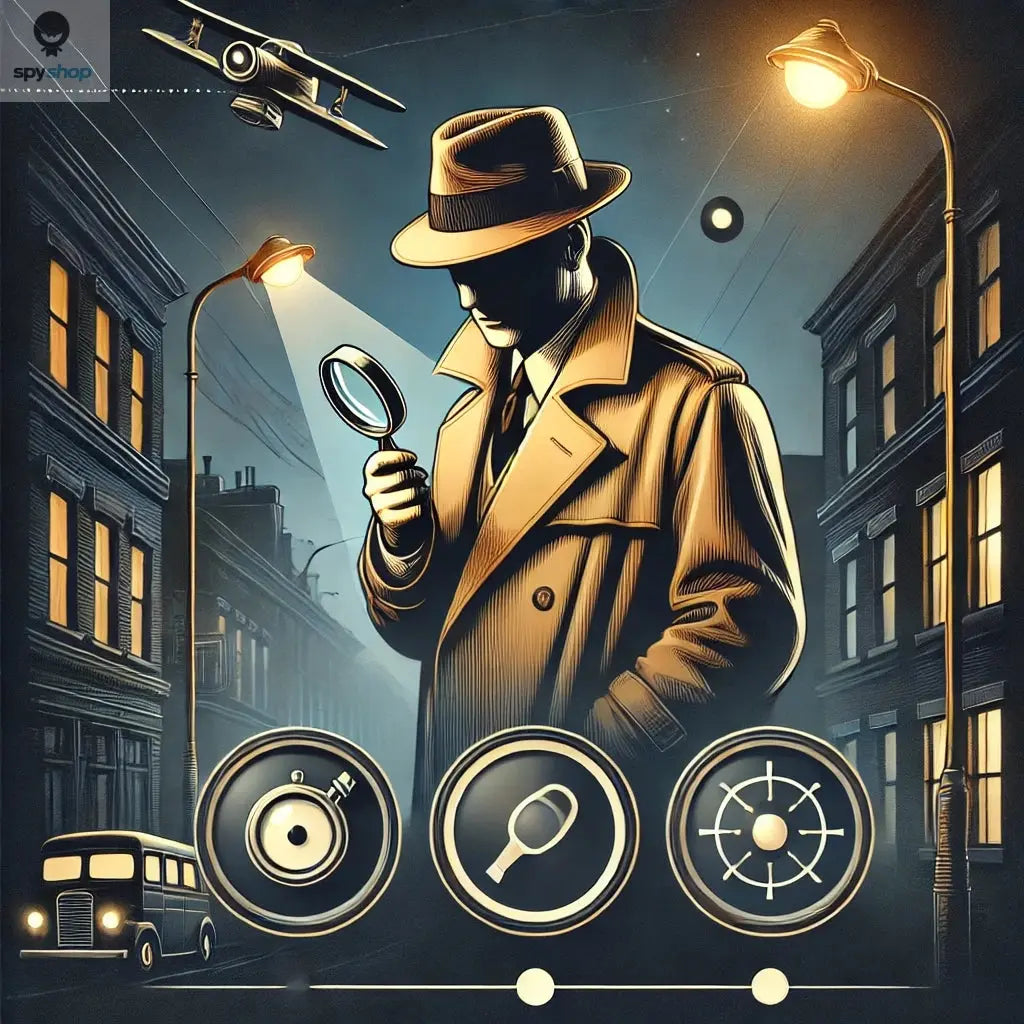
Schützen Sie Ihre Privatsphäre: So finden Sie versteckte Kameras in Ihrem Zuhause
Kleines Kameramodul neben einem Bleistift auf einer schwarzen Oberfläche.
Schlagworte: Überwachungserkennung, Datenschutz-Tipps, Haussicherheit
Die Entdeckung einer versteckten Kamera im eigenen privaten Raum ist eine beunruhigende Verletzung der Privatsphäre, die niemand erleben sollte. Mit den Fortschritten in der Erkennungstechnologie ist die Präsenz von versteckten Kameras in Wohnungen, Geschäften und Mietobjekten jedoch für viele weniger besorgniserregend geworden. Geheime Kameras können geschickt in Alltagsgegenständen getarnt sein, was es schwieriger macht, sie mit bloßem Auge zu erkennen. Daher ist es entscheidend, zu verstehen, wie man versteckte Kameras erkennt, um die eigene Privatsphäre und Seelenruhe zu schützen.
Dieser Leitfaden gibt Ihnen wesentliche Strategien an die Hand, um versteckte Überwachungsgeräte aufzudecken, beginnend mit vorläufigen visuellen Inspektionen, um verräterische Anzeichen einer versteckten Kamera zu erkennen. Anschließend werden wir untersuchen, wie Technologie, insbesondere Geräte zur Erkennung versteckter Kameras, dabei helfen kann, die Anwesenheit dieser geheimen Kameras, einschließlich solcher mit Audiofunktionen, aufzudecken. Auch fortschrittliche Erkennungswerkzeuge und Schritte, die bei der Entdeckung eines Überwachungsgeräts zu unternehmen sind, werden behandelt, damit Sie über umfassendes Wissen verfügen, um Ihr Zuhause vor unbefugter Überwachung zu schützen.
Verstehen von versteckter Überwachungstechnik
Eine Vielzahl von Alltagsprodukten ist darauf ausgelegt, Aktivitäten unauffällig zu überwachen und aufzuzeichnen, ohne entdeckt zu werden. Versteckte Kameras sind oft so gestaltet, dass sie sich in eine normale Raumumgebung einfügen, wodurch sie für das ungeübte Auge nahezu unsichtbar werden. Diese Geräte können als gewöhnliche Haushaltsgegenstände wie Stifte, Teddybären, Rauchmelder und sogar Glühbirnen getarnt sein. Einige versteckte Kameras sind unglaublich klein, möglicherweise so winzig wie eine Schraube, was es ihnen ermöglicht, an zahlreichen Orten entlang von Sockelleisten und Holzverkleidungen verborgen zu werden, ohne bemerkt zu werden.
Häufige Orte, an denen Überwachungsgeräte eingesetzt werden könnten
Überwachungsgeräte sind häufig offen versteckt, um eine Entdeckung zu vermeiden. Häufige Verstecke sind Bereiche, in denen sie normalerweise keinen Verdacht erregen würden. Zum Beispiel können versteckte Kameras und Mikrofone in künstlichen Pflanzen, Gardinenstangen, Plüschspielzeugen, Taschentuchboxen und hohlen Büchern verborgen werden.
Aufwendigere Verstecktechniken beinhalten das Abziehen von Tapeten, das Erstellen eines falschen Hohlraums zum Halten winziger Kamerageräte und das Anbringen einer falschen Rückseite, sodass die Tapete wieder an ihren Platz zurückfällt - was eine ungehinderte Sicht auf die Umgebung ermöglicht.
Vorläufige Sichtinspektionen
Um versteckte Kameras effektiv aufzudecken, ist es entscheidend, eine sorgfältige physische Inspektion einzuleiten. Führen Sie eine Zentimeter-für-Zentimeter-Prüfung sowohl drinnen als auch draußen durch, wobei Sie sich auf Bereiche konzentrieren, in denen geheime Geräte häufig installiert sind.
Verdächtige Objekte identifizieren
-
Alltägliche Gegenstände untersuchen: Achten Sie genau auf kleine Nadelstiche, die auf das Vorhandensein eines Kameralinsens hinweisen könnten. Überprüfen Sie auf fehlplatzierte Objekte, insbesondere in privaten Bereichen wie Schlafzimmern oder Badezimmern.
-
Untersuchen Sie Drähte und elektronische Geräte: Achten Sie auf unnötige Kabel oder Geräte, die an ungewöhnlichen Orten eingesteckt sind. Versteckte Kameras benötigen oft Strom, daher kann ungewöhnliches Verkabeln ein Hinweis sein.
-
Suche nach versteckten Löchern oder Lücken: Achten Sie auf kleine Öffnungen in Wänden, dekorativen Gegenständen oder Armaturen, die eine Lochkamera beherbergen könnten.
Technologie zur Erkennung von Überwachungsgeräten einsetzen
In der modernen Welt bietet die Technologie mehrere Methoden, um versteckte Kameras und Überwachungsgeräte in Ihrer Umgebung zu erkennen.
Anrufstörungen: "Rufen Sie an und gehen Sie in der verdächtigen Gegend umher. Versteckte Kameras sind dafür bekannt, Telefonsignale zu stören, was zu Störungen oder seltsamen Unterbrechungen führen kann."
Kameraerkennungs-Apps: Laden Sie Anwendungen herunter und verwenden Sie sie, die dazu entwickelt wurden, versteckte Kameras zu erkennen. Apps wie "Spy Hidden Camera Detector" können elektromagnetische Felder wahrnehmen oder den Glanz von Kameralinsen erkennen.
Infrarot-Erkennung: Verwenden Sie die Kamera Ihres Smartphones, um Infrarotlichter zu erkennen, die viele versteckte Kameras verwenden, um bei schwachem Licht aufzuzeichnen. Stellen Sie sicher, dass der Raum dunkel ist, und richten Sie dann die Kamera Ihres Telefons im Raum aus, um unerwartete Lichtquellen zu identifizieren.
Wi-Fi- und Netzwerkscanning: Viele moderne versteckte Kameras verbinden sich mit dem Internet für die Fernüberwachung. Installieren Sie eine Netzwerk-Scanner-App wie Fing, um alle Geräte zu identifizieren, die mit Ihrem Wi-Fi-Netzwerk verbunden sind. Achten Sie auf unbekannte oder verdächtige Gerätenamen.
Fortgeschrittene Erkennungswerkzeuge
Für diejenigen, die das höchste Maß an Privatsphäre und Sicherheit suchen, bieten fortschrittliche Erkennungswerkzeuge robuste Lösungen zur Identifizierung versteckter Überwachungsgeräte.
Wanzen- und Spionagekamera-Detektoren: Geräte wie der Pocket Combi Bug Detector nutzen fortschrittliche Technologie, um versteckte Kameras und Abhörgeräte zu lokalisieren. Einige Detektoren verfügen über Infrarotdetektion, um Kameras bei schwachem Licht zu erkennen, und über Funkfrequenz (RF) Sweep-Funktionen, um drahtlos übertragende Geräte zu identifizieren.
Einstellung von professionellen Kehrrichtern: Für eine gründliche Erkennung sollten Sie in Betracht ziehen, professionelle Abhörschutzdienste zu engagieren. Unternehmen wie Bug Sweeping UK bieten umfassende technische Überwachungsgegenmaßnahmen (TSCM) an. Diese Dienstleistungen nutzen spezialisierte Geräte, einschließlich RF-Detektoren und Wärmebildkameras, um versteckte Sender und Kameras zu lokalisieren.
Ein Überwachungsgerät finden
Wenn Sie vermuten, dass Ihr Zuhause, Büro oder Fahrzeug abgehört wurde, vermeiden Sie es, das Gerät zu manipulieren. Dokumentieren Sie es stattdessen, indem Sie es aus mehreren Winkeln fotografieren. Melden Sie die Entdeckung den zuständigen Behörden und geben Sie detaillierte Informationen wie den Standort des Geräts, das Datum und die Uhrzeit der Entdeckung an.
Rechtliche und Sicherheitsvorkehrungen
Konsultieren Sie einen Rechtsanwalt, um Ihre Rechte und die rechtlichen Folgen der Entdeckung zu verstehen. Vermeiden Sie es, sensible Angelegenheiten in Bereichen zu besprechen, die möglicherweise noch überwacht werden, und ziehen Sie in Betracht, vorübergehend an einen sicheren Ort umzuziehen, falls dies notwendig ist.
Indem Sie sich mit dem Wissen und den Werkzeugen ausstatten, die notwendig sind, um versteckte Kameras zu erkennen, können Sie Ihre Privatsphäre schützen und die Kontrolle über Ihre persönlichen und gemeinsamen Umgebungen behalten.


